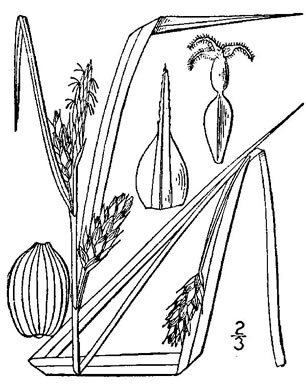Spermatophytes (seed plants): Angiosperms (flowering plants): Monocots: Commelinids: Poales
WEAKLEY'S FLORA OF THE SOUTHEASTERN US (10/20/20):
Carex grisea
FAMILY
Cyperaceae
Go to FSUS key
Dig deeper at SERNEC, a consortium of southeastern herbaria.
Read more about Inflated Narrowleaf Sedge at Vascular Plants of North Carolina.
SYNONYMOUS WITH
PLANTS NATIONAL DATABASE:
Carex grisea
FAMILY
Cyperaceae
INCLUDED WITHIN Aquatic & Wetland Plants of Southeastern US (Godfrey & Wooten, 1979 & 1981)
Carex amphibola
INCLUDED WITHIN VASCULAR FLORA OF THE CAROLINAS (Radford, Ahles, & Bell, 1968) 030-17-076:
Carex grisea FAMILY Cyperaceae
INCLUDED WITHIN Manual of the Southeastern Flora (Small, 1933, 1938)
Carex grisea
COMMON NAME:
Inflated Narrowleaf Sedge, Wood Gray Sedge
To see larger pictures, click or hover over the thumbnails.
WEAKLEY'S FLORA OF THE SOUTHEASTERN US (10/20/20):
Carex grisea
FAMILY
Cyperaceae
SYNONYMOUS WITH
PLANTS NATIONAL DATABASE:
Carex grisea
FAMILY
Cyperaceae
INCLUDED WITHIN
Aquatic & Wetland Plants of Southeastern US (Godfrey & Wooten, 1979 & 1981)
Carex amphibola
INCLUDED WITHIN
VASCULAR FLORA OF THE CAROLINAS (Radford, Ahles, & Bell, 1968) 030-17-076:
Carex grisea
FAMILY
Cyperaceae
INCLUDED WITHIN
Manual of the Southeastern Flora (Small, 1933, 1938)
Carex grisea
If a search such as "Carex leptalea var. leptalea" doesn't deliver the results you want, try "Carex leptalea".
Or, to minimize chances of a misspelling, try just "Carex le".
Less is more: If "pencil flower" doesn't deliver the results you want, try "pencil".


